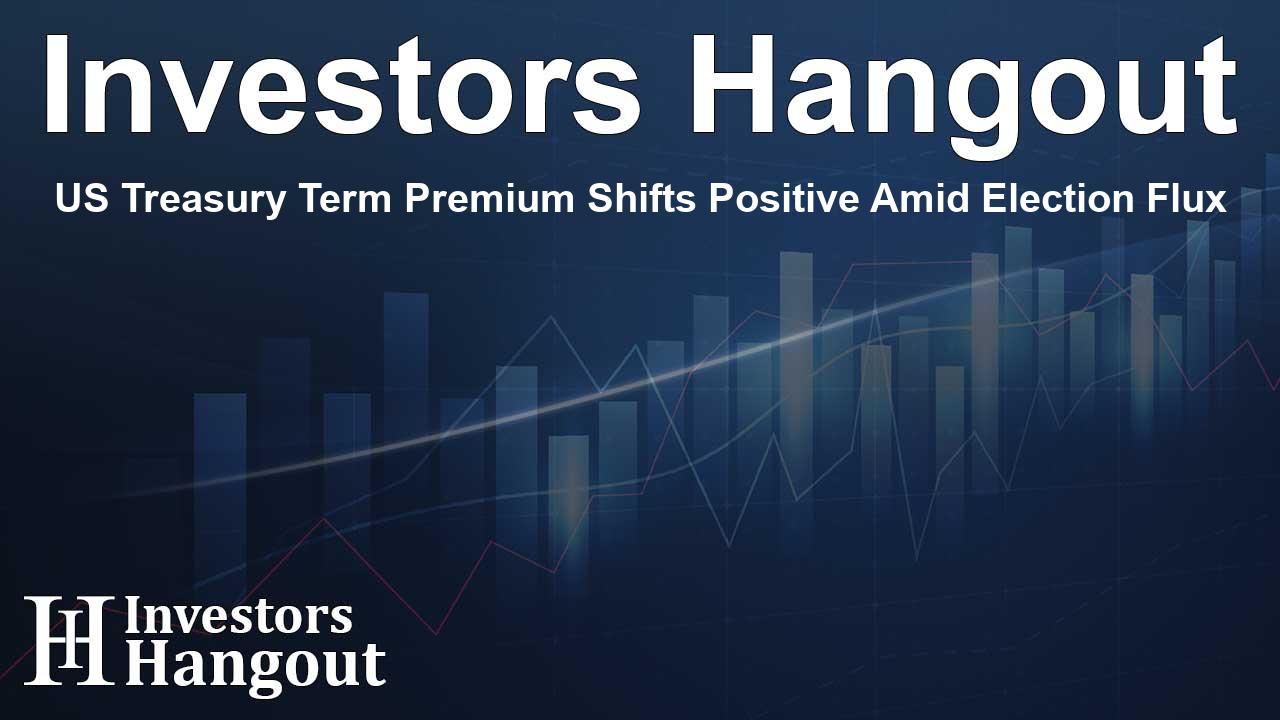US Treasury Term Premium Shifts Positive Amid Election Flux

US Treasury Term Premium Shifts Towards Positive Territory
The U.S. Treasury's 10-year term premium recently made headlines by moving back into positive territory amid widespread uncertainty surrounding upcoming elections. This term premium is critical as it reflects the extra compensation investors require to hold long-term government debt securities, which is particularly significant given the ongoing economic dynamics.
Understanding the Term Premium
For nearly a decade, the term premiums had remained largely suppressed due to low interest rates initiated after the financial crisis of 2007-2009 and further emphasized during the COVID-19 pandemic. However, over the past couple of years, these premiums have gradually risen, echoing fears of long-term fiscal issues and persistent inflation concerns.
Recent Changes in Treasury Yields
According to data from the Federal Reserve Bank of New York, the 10-year term premium turned positive for the first time since late July. Specifically, it registered at 0.034% this week, compared to a negative 0.047% from the previous week. This noteworthy change coincided with a rise in Treasury yields, following robust jobs data that stirred investor confidence and prompted speculations about interest rate cuts from the Federal Reserve.
Impact of Economic Resilience
With benchmark 10-year yields increasing to over 4% recently, expectations surrounding monetary policy have also shifted dramatically. This surge indicates a market adjusting to the economic landscape where aggressive rate cuts appear less likely, suggesting that investors are factoring in stronger economic resilience despite past forecasts.
Political Factors Influencing Markets
As the November presidential election date approaches, market sentiment is also being shaped by political dynamics. Matthew Miskin, a co-chief investment strategist at John Hancock Investment Management, commented on how markets might be leaning toward expectations of increased government deficits, particularly if former President Donald Trump emerges victorious against Vice President Kamala Harris.
Polls and Market Reactions
Recent polling data revealed that Harris holds a marginal lead over Trump by just three percentage points. Analysts suggest that as former President Trump's chances improve, the longer-end Treasury yield curve might continue to rise. Miskin pointed out that greater expectations of deficit spending could lead to a higher supply of treasuries and thus higher yields for long-term maturities.
Investor Expectations and Future Outlook
PIMCO, a leading bond asset manager, has expressed expectations for term premiums to see a significant rise in light of sticky inflation and growing fiscal deficits. In their recent analysis, they underscored that the ramifications of policy changes post-election could further impact long-term Treasury securities, despite the possible short-term scenarios of lower interest rates.
Inflation Expectations on the Rise
The market's anticipation of inflation over the next decade is also stirring attention, with the current difference between 10-year nominal Treasury yields and yields on 10-year inflation-protected Treasuries hitting 2.284%, its highest since late July. This statistic clearly paints a picture of the broader economic landscape and indicates where investor sentiment may be leaning.
Conclusion
The interplay between elections, economic performance, and investor sentiment in the U.S. Treasury market creates a complex environment. As these factors continuously evolve, it remains crucial for investors to stay informed about the upcoming developments that could influence long-term bond strategies.
Frequently Asked Questions
What is the term premium in U.S. Treasuries?
The term premium represents the additional yield investors demand to hold long-term government debt securities, compensating for risks like inflation and interest rate fluctuations.
Why did the term premium turn positive?
The term premium shifted to positive territory due to stronger job data, reduced expectations for aggressive rate cuts, and heightened political uncertainty as elections approach.
How do political factors affect Treasury yields?
Political dynamics can lead to expectations of higher government spending or fiscal deficits, which typically result in increased bond supply, thereby pushing yields higher.
What do rising Treasury yields indicate?
Rising Treasury yields generally suggest that investors anticipate stronger economic growth and inflation, leading them to demand higher returns for longer-term investments.
How do inflation expectations influence the bond market?
Higher inflation expectations can lead to increased yields on bonds, as investors seek greater compensation for the loss of purchasing power over time.
About Investors Hangout
Investors Hangout is a leading online stock forum for financial discussion and learning, offering a wide range of free tools and resources. It draws in traders of all levels, who exchange market knowledge, investigate trading tactics, and keep an eye on industry developments in real time. Featuring financial articles, stock message boards, quotes, charts, company profiles, and live news updates. Through cooperative learning and a wealth of informational resources, it helps users from novices creating their first portfolios to experts honing their techniques. Join Investors Hangout today: https://investorshangout.com/
Disclaimer: The content of this article is solely for general informational purposes only; it does not represent legal, financial, or investment advice. Investors Hangout does not offer financial advice; the author is not a licensed financial advisor. Consult a qualified advisor before making any financial or investment decisions based on this article. The author's interpretation of publicly available data shapes the opinions presented here; as a result, they should not be taken as advice to purchase, sell, or hold any securities mentioned or any other investments. The author does not guarantee the accuracy, completeness, or timeliness of any material, providing it "as is." Information and market conditions may change; past performance is not indicative of future outcomes. If any of the material offered here is inaccurate, please contact us for corrections.